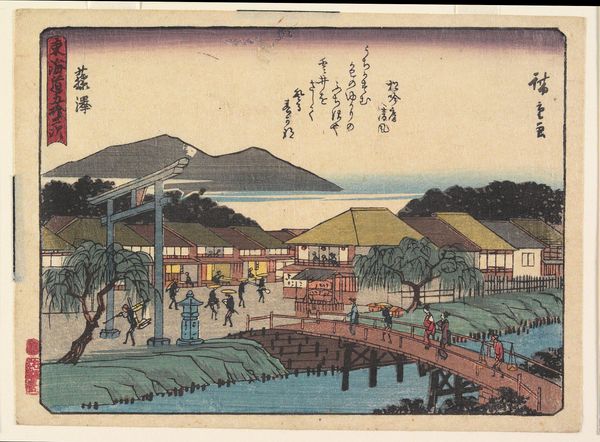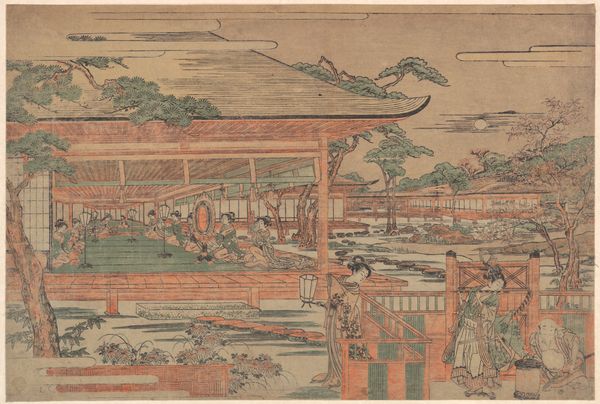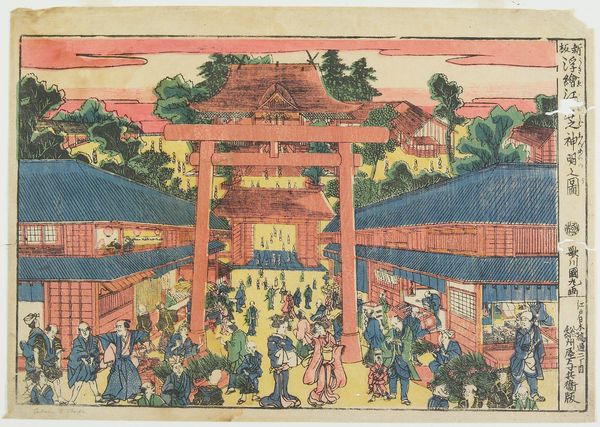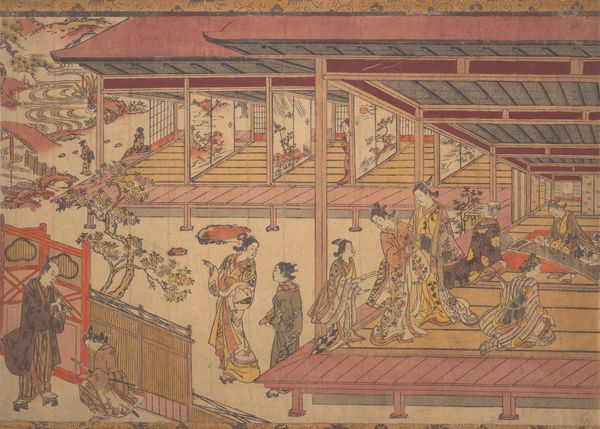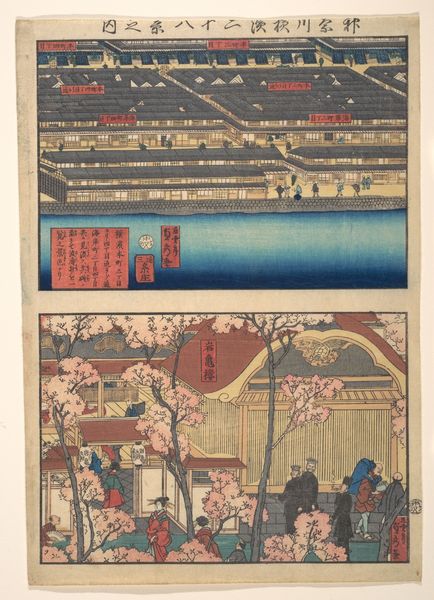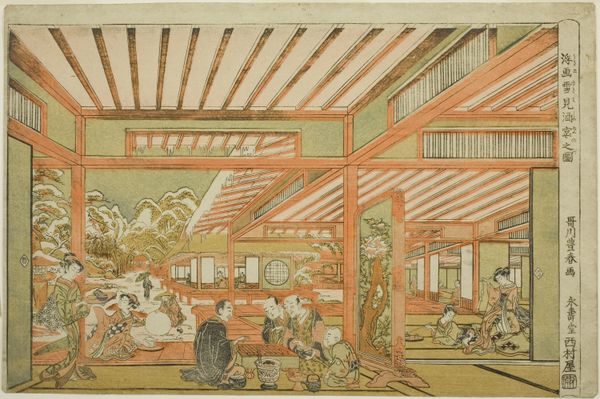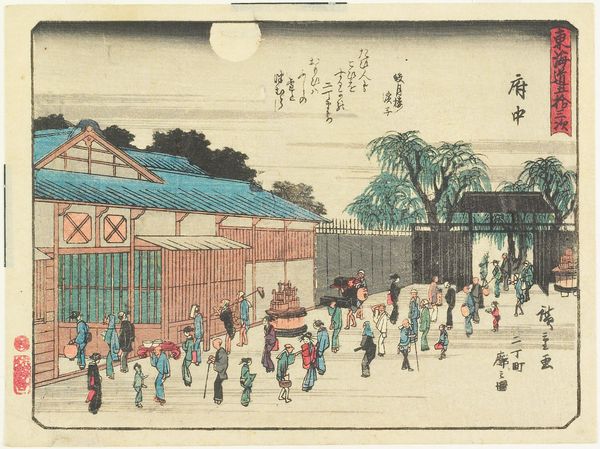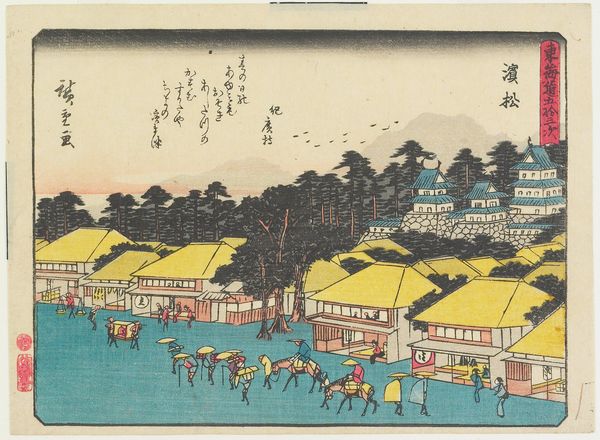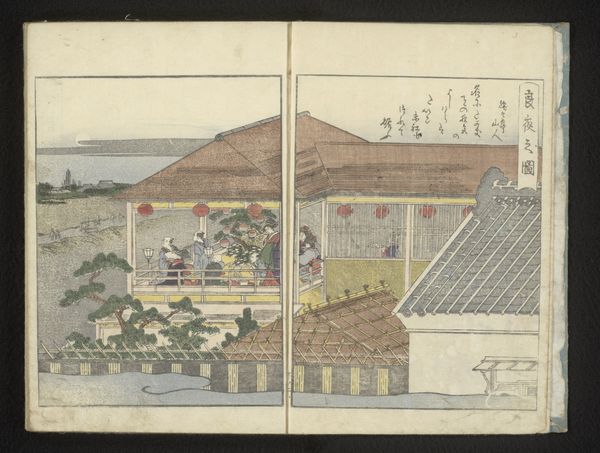
print, woodblock-print
# print
#
asian-art
#
landscape
#
ukiyo-e
#
woodblock-print
#
cityscape
#
genre-painting
Dimensions: H. 4 1/2 in. (11.4 cm); W. 12 3/8 in. (31.4 cm)
Copyright: Public Domain
Curator: Utagawa Toyoharu's woodblock print, "Cooling at Nakazu/ Kabuki Theater," thought to have been created sometime between 1735 and 1814, offers us a split perspective. What are your first impressions? Editor: It's quite striking, actually. The split panel creates an immediate dialogue between what seems to be an exterior waterside scene and the interior of a bustling theatre. There’s a warm, almost theatrical glow emanating from both, but with a slightly muted palette. Curator: Exactly! On the left, we see a bustling cityscape along the river, perhaps near Nakazu, filled with people enjoying what seems to be a pleasant day. On the right, an interior shot reveals the inside of a Kabuki theater. It’s a fascinating contrast, public and private, open air and enclosed space. Editor: I'm intrigued by the composition. The linear perspective is almost Western, pulling you into each scene. And that red! It unifies the two halves, doesn’t it? Almost like the shared passion for spectacle connects the outdoor revelry with the theatrical performance. Curator: I love how you see that. Utagawa was known for his adoption of Western perspective, which was quite revolutionary for Ukiyo-e prints at the time. It creates depth, yes, but also a sense of immediacy. You’re right, there's definitely a common thread with the colour: the theatre pulsates a different kind of life, a focused vitality that compliments the diffused ambience outdoors. Editor: I find myself drawn to the figures, or maybe I should call them signs, because they give insight to social contexts. You see them engaged in everyday pleasures on both sides, like taking strolls outside while on the other half of the image, spectators are watching performances indoors. The red colour works also almost like the sunset for outdoor scenarios or, like stage lights during theater performance Curator: A shared moment of observation that unifies all social backgrounds of viewers of the day. Considering this print is an early example of Utagawa's artistic vision, I think it masterfully illustrates the dynamic interplay of life and art in 18th-century Japan. Editor: Agreed. The print leaves me contemplating the different roles we play as both observers and participants. There's real depth of feeling, even with this style.
Comments
No comments
Be the first to comment and join the conversation on the ultimate creative platform.
